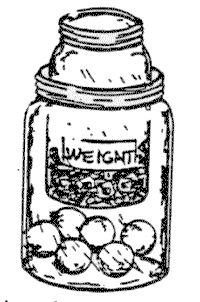Materials:
Activity:
|
 |
Return To Primary Lesson Plans
Click here for a printable version
Title: Metamorphic Rock Activities
Time: 1 class period
KERA Goals: 2.3, 2.4, 2.5, 2.6
Objective:
Students will understand that metamorphic rocks are sedimentary igneous, or other metamorphic rocks that have been changed by heat and pressure.
Background Information:
Metamorphic rocks have been changed by heat and pressure around igneous intrusions in the deeper parts of mountains systems. Heat and pressure make the rocks soft (but not melted) so they actually bend and flex! Uplift and erosion of the crust have combined to expose them on the surface. Here are two activities to help you better understand metamorphic rocks.
Materials:
Activity:
|
 |
Materials:
Activity:
NOTE: Be careful!! The jar will be hot, and burning bubble gum smells icky!
Fill the jar ½ full of bubble gum (unwrapped of course).
Place it in cold oven.
Put the weight inside the first jar on top of the gum.
Heat the oven gradually to about 170 degrees C (350 degrees F).
After about ½ hour at 350 degrees, push the weight down gently.
Note how the gum deformed. If you did this activity carefully, the gum will not melt and you will end up with "metamorphosed bubble gum conglomerate."
Discussion:
Find out more about 4 typical metamorphic rocks: quartzite, slate, marble, and gneiss. These are all metamorphosed forms of which rocks?
Freeze a bar-shaped block of ice. Mount it in the freezer by putting supports under each end, and place a weight on the middle. What happens over several days? Ice is a kind of metamorphic rock!
Experiment with "Silly Putty." What happens when you leave it on a table overnight? What happens if you drop it? What happens if you hit it with a hammer when it is cold? Relate this to rocks deep below the surface.
Return To Primary Lesson Plans
Provided by The Society for Mining, Metallurgy, and Exploration, Inc.